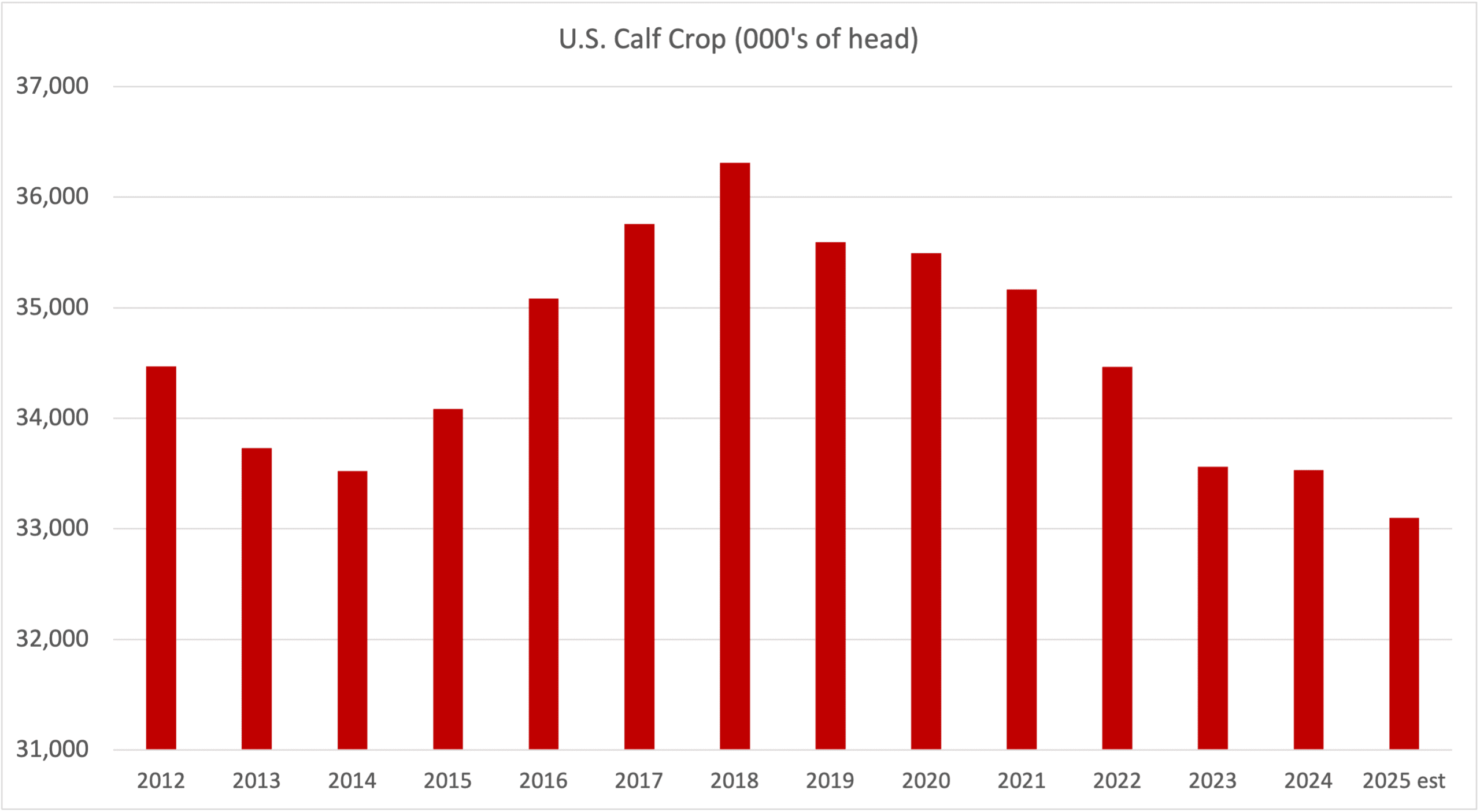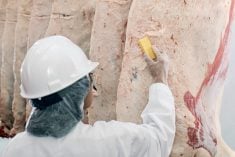I have followed the U.S. and global beef markets for the past 35 years. But all those years didn’t stop me from being blindsided by a sudden and pronounced weakness in beef demand in the U.S. during September. Only a few weeks earlier, I had opined in this column and in my own newsletter that demand remained resilient, underpinned by a stronger-than-expected U.S. economy.
That is how the demand picture seemed in August. So, the weakness after the U.S.’s last major summer holiday, Labour Day on September 4, knocked me and other market watchers sideways. No one has a good explanation for how suddenly things changed. But it seems that months of record-high retail prices finally forced consumers to buy more pork and chicken.
The graphic evidence was the lack of a lift in boxed beef (wholesale) cutout values that had been expected during and after the Labour Day holiday-shortened production week. But the cutouts on a weekly and daily basis both declined by several dollars per cwt. The comprehensive cutout (cuts, grinds and trim) in the holiday week averaged US$308.59 per cwt, down US$3.77 per cwt from the prior week. The Choice cutout averaged US$309.96 per cwt, down US$2.58 per cwt. Spot market Choice prices fell by almost as much as that in the four days of the holiday week. Worse was to come. The Choice cutout the next week declined by US$7.19 per cwt to US$305.71 per cwt.
Read Also

Factors influencing cattle feeder market during the fall of 2025
Market analyst Jerry Klassen weighs in on live cattle markets
Meanwhile, U.S. beef exports continue to struggle, notably in the key Asian markets of South Korea, Japan and China. July exports overall were the lowest in six months. July exports to Korea were down 24 per cent year-on-year and were down 37 per cent to Japan. The value of exports to both countries was also down significantly. Exports to China from January through July were down 20 per cent in volume and down 25 per cent in value. The only real bright spot in July was that exports to Mexico continued to gain momentum. They rose 31 per cent from a year ago and their export value soared 55 per cent.
The decline in beef cutout values had veteran analysts wringing their hands. The price decline was very concerning, particularly given the holiday-reduced weekly production schedule, said Andrew Gottschalk, HedgersEdge.com. Retail reports for the holi- day week and weekend showed some modest slowing in sales, with pork being the sales leader in the meat complex. Significant post-holiday fill-in business failed to materialize. The failure of the cutouts to rebound to date did not bode well for their values for the balance of the month, he said.
Gottschalk also described the slaughter total (an estimated 559,000 head) in the holiday week as disappointing. It went against an actual total of 606,027 head the same holiday week last year. The slaughter total for the year to September 15 was an estimated 23.002 million head, down 1.026 million head or 4.3 per cent from last year. About 25 per cent of this decline was in cow slaughter. At this rate, the annual harvest this year would decline by 1.4 million head, said Gottschalk.
As steaks, roasts and other beef items become more expensive, ground beef seems to be carrying the day, noted Elliot Dennis, University of Nebraska-Lincoln. There are lots of simple and easy-to-cook ground beef recipes to use while families attempt to stay within a budget as general inflation, food included, continues to rise. Demand for lean beef is strong. This plus low imports of lean beef will continue to keep cutter cow prices high, he said. That is music to cow-calf producers’ ears.
















